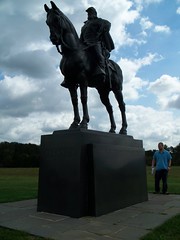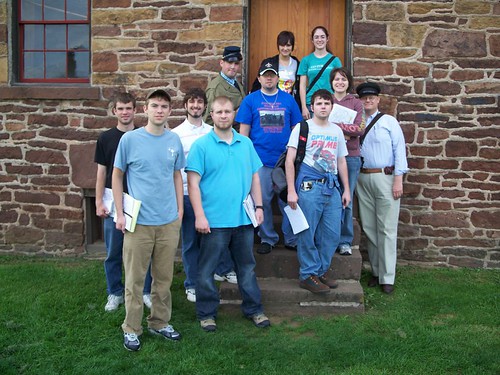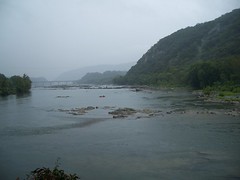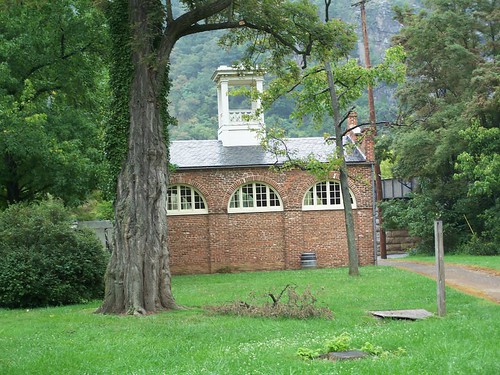 We started off with the First Battle of Manassas. The First Battle of Manassas was the first major campaign of the war, fought in July of 1861, and the North was confident that they would win the engagement and end the rebellion quickly. Jim took us first to the Stone Bridge over Bull Run that was the sight of the first shots of the battle in a diversionary tactic by the Union. Then we went to the area that was the main battlefield for his engagement: Matthew's Hill and Henry House Hill. The main fighting began by Matthew's Hill and was pushed back to Henry Hill for the remainder of the battle. This is where Thomas Jonathan Jackson gained the nickname that would forever stick: "Stonewall" Jackson.
We started off with the First Battle of Manassas. The First Battle of Manassas was the first major campaign of the war, fought in July of 1861, and the North was confident that they would win the engagement and end the rebellion quickly. Jim took us first to the Stone Bridge over Bull Run that was the sight of the first shots of the battle in a diversionary tactic by the Union. Then we went to the area that was the main battlefield for his engagement: Matthew's Hill and Henry House Hill. The main fighting began by Matthew's Hill and was pushed back to Henry Hill for the remainder of the battle. This is where Thomas Jonathan Jackson gained the nickname that would forever stick: "Stonewall" Jackson.
After lunch Jim took us out to the Brawner Farm to begin the Second Battle of Manassas. The amazing element in both battles is that they were fought on such small areas of land. We only had to make only a few stops to see the majority of the battlefield. The Brawner Farm was the flank of the Confederate lines and also where the famed Iron Brigade earned its name. From the Brawner Farm we moved to where the Union made its main assault on the Confederates at the unfinished railroad cut. Here Dr. Guelzo got tired of our slow pace and had us march in column formation which we did much better than our line formation last week, especially since Dr. Guelzo led us in some marching songs. Our last stop before hitting the bookstore at the Visitor Center was Chinn Ridge where the Union fought a flanking maneuver by Longstreet.
Unfortunately for the Union, both battles at Manassas were defeats and ended in retreats back towards Washington. Our retreat was orderly as we boarded the bus and headed back to Gettysburg. Next week: Winchester!
-Katie Logothetis


